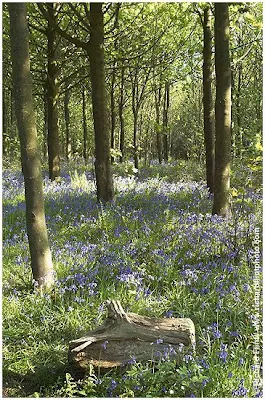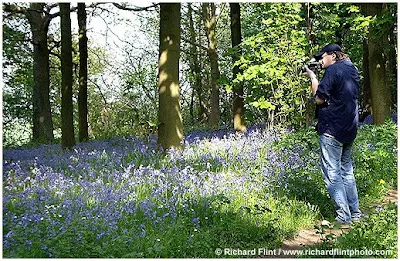 Sebastião Salgado is arguably, one of the most successful contemporary photojournalists of recent years with accolades and awards for his projects stretching back over twenty five years. His photographic work reflects his deep humanist feelings towards his subjects, many of whom are from very poor backgrounds trying to scratch a living in a tough and unforgiving world.
Sebastião Salgado is arguably, one of the most successful contemporary photojournalists of recent years with accolades and awards for his projects stretching back over twenty five years. His photographic work reflects his deep humanist feelings towards his subjects, many of whom are from very poor backgrounds trying to scratch a living in a tough and unforgiving world.Sebastião Salgado was born in 1944 in Aimorés, Minas Gerais,Brazil and studied economics before moving to Paris where he completed a Ph.D. in economics and was employed as an economist for International Coffee Organization until 1973. During a trip to Africa, Salgado borrowed his wife's camera and it was after this period that Salgado decided to go into photography, first joining the Sygma agency (1973-74) and then going to Gamma (1975-79). He later joined the Magnum photo agency in 1979 but left in 1994 due to his unhappiness with the way his work was being used/sold. After leaving Magnum Salgado launched his own photo agency called Amazonas Images which currently represents Salgado and his work.
 Salgado used Paris as his base to cover various stories around the world including the wars in Angola, the Spanish Sahara and the attempted assassination of President Ronald Reagan -the revenue from the image sales of the last story helped Salgado fund his photographic projects. For seven years between 1977 and 1984, Sebastião Salgado roamed Latin America photographing remote mountainous villages and peasant cultures of Indians and their descendants in Mexico and Brazil. The resulting images were used in a book and exhibition called Other Americas.
Salgado used Paris as his base to cover various stories around the world including the wars in Angola, the Spanish Sahara and the attempted assassination of President Ronald Reagan -the revenue from the image sales of the last story helped Salgado fund his photographic projects. For seven years between 1977 and 1984, Sebastião Salgado roamed Latin America photographing remote mountainous villages and peasant cultures of Indians and their descendants in Mexico and Brazil. The resulting images were used in a book and exhibition called Other Americas. His next large scale project was called Workers which took five years to create. Many of Salgado's best known images come from this project where he photographed, in over twenty five countries , the end of large scale labour. Very few photographers, these days, have completed works on such large scales but even more amazing are the powerful images, that reflect the bleak and miserable existence for many workers during that period. Many of the photographs look at industries that employed vast numbers of men to do back breaking work; the sheer numbers of men in some of the Brazil gold mine images is just staggering. Further projects after Workers included photography about migration and the plight of displaced persons, refugees and migrants in over 40 countries. The success of Salgado's work is down to the quality of the images and his pragmatic ability to be able to show his work outside of the usual photojournalistic areas; he is certainly not afraid to exhibit and be called an artist which can make some photojournalists start to froth at the mouth! In an era when the human interest story is sidelined for the constant demand for celebrity images, Sebastião Salgado has managed to keep a small traditional sector of photojournalism alive and well....at least on a small scale.
His next large scale project was called Workers which took five years to create. Many of Salgado's best known images come from this project where he photographed, in over twenty five countries , the end of large scale labour. Very few photographers, these days, have completed works on such large scales but even more amazing are the powerful images, that reflect the bleak and miserable existence for many workers during that period. Many of the photographs look at industries that employed vast numbers of men to do back breaking work; the sheer numbers of men in some of the Brazil gold mine images is just staggering. Further projects after Workers included photography about migration and the plight of displaced persons, refugees and migrants in over 40 countries. The success of Salgado's work is down to the quality of the images and his pragmatic ability to be able to show his work outside of the usual photojournalistic areas; he is certainly not afraid to exhibit and be called an artist which can make some photojournalists start to froth at the mouth! In an era when the human interest story is sidelined for the constant demand for celebrity images, Sebastião Salgado has managed to keep a small traditional sector of photojournalism alive and well....at least on a small scale. Various charities and aid organisations have benefited from Sebastião Salgado's photography over the years including Doctors without Borders and the United Nations, where the photographer documented the UN's fight against Polio in Africa and India. The photographs looked at the daily struggle against polio with a background of conflict and cultural considerations, continuing to complicate further the immensely important task of inoculation. The strength of Salgado's work comes from its sympathetic look at the subject, while informing the viewer about the issues involved. Salgado never looks down on his subject matter- if anything he is a motivator for social change, using images to get across what is happening in the world. I've loved his work since i first saw some of his images in the mid 1980's. The fantastic use of light in his images is just one outstanding feature of his work; the complete package of style and message is a powerful element to Salgado's work. Hopefully this great photographer will continue to produce his powerful and thought provoking images for many years to come.
Various charities and aid organisations have benefited from Sebastião Salgado's photography over the years including Doctors without Borders and the United Nations, where the photographer documented the UN's fight against Polio in Africa and India. The photographs looked at the daily struggle against polio with a background of conflict and cultural considerations, continuing to complicate further the immensely important task of inoculation. The strength of Salgado's work comes from its sympathetic look at the subject, while informing the viewer about the issues involved. Salgado never looks down on his subject matter- if anything he is a motivator for social change, using images to get across what is happening in the world. I've loved his work since i first saw some of his images in the mid 1980's. The fantastic use of light in his images is just one outstanding feature of his work; the complete package of style and message is a powerful element to Salgado's work. Hopefully this great photographer will continue to produce his powerful and thought provoking images for many years to come.All Images by Sebastião Salgado
- Top left - Sebastião Salgado
- Middle left - Refugee from Gondan, Mali, 1985
- Middle right - Gold mine, Serra Pelada in the federal state of Pará, Brazil
- Bottom left - Sahel - The End of the Road
Links

























